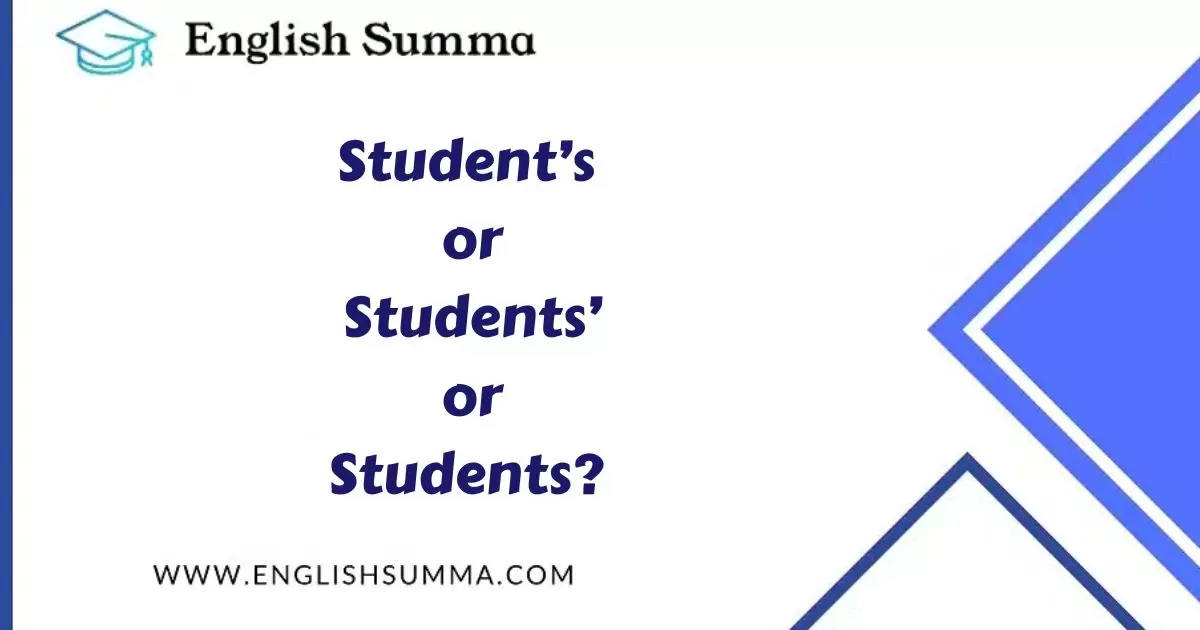In the intricate landscape of English grammar, apostrophes play a crucial role in indicating possession. However, when it comes to possessive forms of the word “student,” confusion often arises. Is it “student’s,” “students’,” or simply “students”? Understanding the nuances of each form is essential for clear and effective communication.
This article will delve into the various uses of these possessive forms and provide scenario examples to elucidate their distinctions.
Student’s: Singular Possession
Let’s start with the singular possessive form, “student’s.” This form is used when referring to something belonging to or associated with a single student. The apostrophe followed by the letter ‘s’ indicates possession by an individual student.
Scenario Example:
- The student’s book was left on the desk.
In this sentence, “student’s” indicates that the book belongs to a specific student.
Students’: Plural Possession
Moving on to the plural possessive form, “students’,” we use this when referring to something belonging to or associated with multiple students. In this case, the apostrophe comes after the ‘s’ in “students,” indicating possession by a group of students.
Scenario Example:
- The students’ project received high praise from the teacher.
Here, “students’” signifies that the project is collectively owned or related to multiple students.
Students: No Possessive
Lastly, we have the plural form without possession, “students.” This form is used when referring to multiple students without indicating possession or association with any specific entity.
Scenario Example:
- The students gathered in the auditorium for the assembly.
In this sentence, “students” simply refers to the group of individuals without implying possession.
Distinguishing Between the Forms
Understanding when to use each form is crucial for conveying precise meaning in writing. Let’s explore further with some additional scenarios.
Scenario 1: Classroom Equipment
Student’s:
- The student’s laptop was left in the classroom.
This sentence suggests that a specific student left their laptop behind.
Students’:
- The students’ laptops were scattered across the desks.
Here, it implies that multiple students have laptops, and they left them in various places within the classroom.
Students:
- The students need to bring their laptops to class tomorrow.
This sentence simply refers to the students in general, without any indication of possession.
Scenario 2: Academic Achievements
Student’s:
- Each student’s performance will be evaluated individually.
This sentence emphasizes the evaluation of each individual student’s performance.
Students’:
- The students’ grades improved significantly this semester.
Here, it highlights the collective improvement in grades among all the students.
Students:
- Students must maintain a high level of academic integrity.
In this case, “students” refers to the entire student body without indicating possession.
Conclusion
In conclusion, the use of apostrophes in the possessive forms of “student” depends on whether we are referring to singular or plural possession. “Student’s” indicates possession by a single student, “students’” indicates possession by multiple students, and “students” is the plural form without possession.
Mastering these distinctions enhances clarity and precision in written communication. By understanding when to use each form, writers can effectively convey their intended meaning, ensuring that their messages are accurately interpreted by readers.
Related Post:

